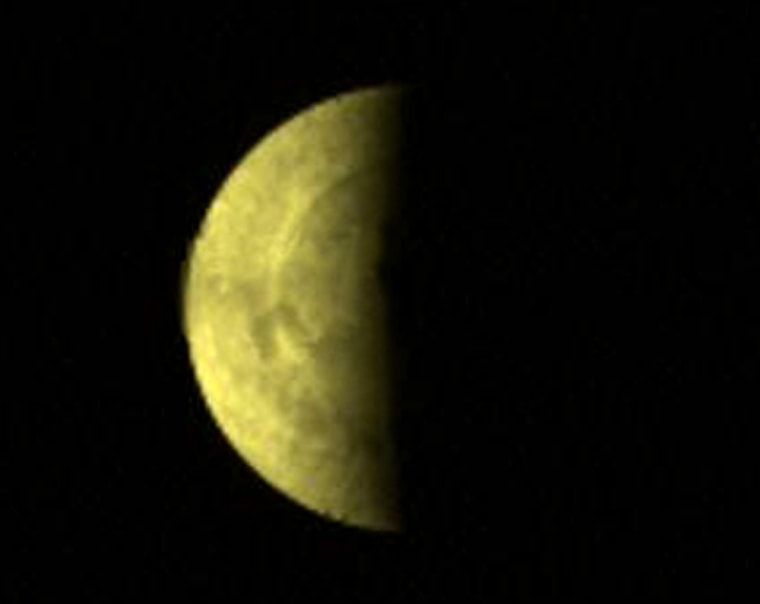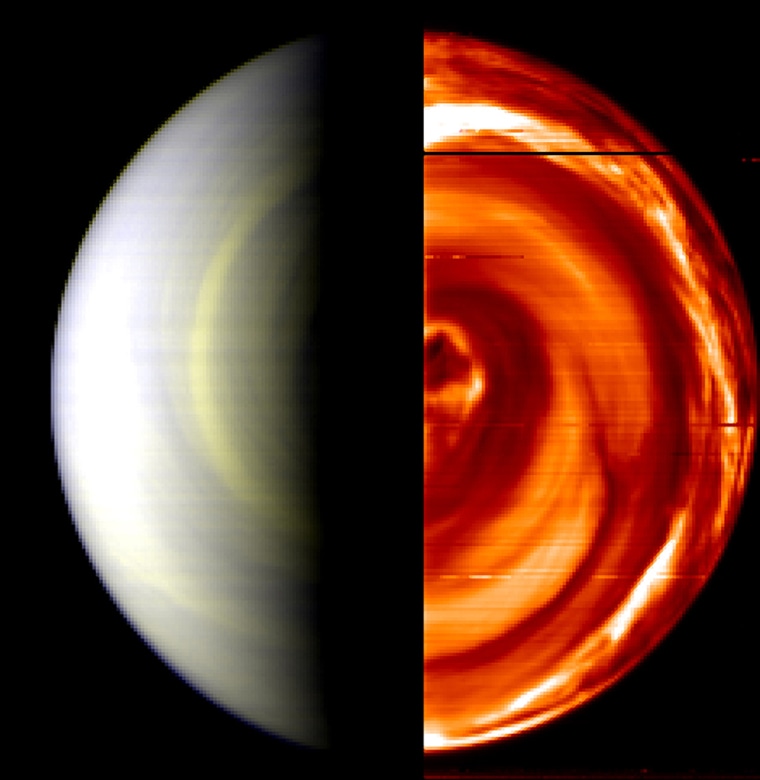European scientists released new photos of Venus’ south pole Thursday, revealing a swirling mass of sulfuric acid clouds powered by 220 mph winds.
The clouds, 13 miles deep, completely enclose Venus. The new images of the planet’s south pole, which is turned away from Earth, closely resemble those of its more familiar north pole.
The images, taken from the European Space Agency’s orbiting Venus Express spacecraft from a distance of roughly 124,000 miles, show pale clouds turning around a dark vortex.
“We can see there is a swirl here that is similar to the one we know from the north pole,” said Horst Uwe Keller, who leads the team operating the craft’s wide-angle camera — one of seven instruments aboard the Venus Express.
Using infrared technology that allows the camera to peer though the clouds, scientists hope to be able to determine how the sulfuric acid that swathes the planet was formed, and pinpoint the cause of the high-speed winds that sends it swirling in massive clouds.
“I think that the decisive question will be to discover the dynamic of the atmosphere,” Keller said. “Why are the clouds turning in the direction that we see? Why so quickly?”
The images were taken Wednesday, one day after Venus Express went into orbit around the planet.
ESA controllers in Darmstadt, Germany, switched on each instrument individually to make sure they had survived slowing the vessel so it could be captured by Venus’ gravity.
In the next several weeks, scientists will run more thorough tests on the spacecraft’s instruments, designed to help researchers better understand the atmosphere and climate of Earth’s neighbor. By June, they expect to have all instruments fully functioning.

As the spacecraft tightens its orbit in coming months, scientists expect it to capture more detailed and revealing images of Venus from a distance of only about 155 miles, Keller said in a telephone interview.
The $260 million mission, the first to Venus since NASA sent up the Magellan mission in 1989, aims to study the greenhouse effect on the planet, where the atmosphere is intensely hot and crushingly dense.
It also hopes to learn what caused volcanic activity some 500 million years ago and whether there is any taking place today.
Venus Express was launched Nov. 9 atop a Russian booster rocket from the Baikonur Cosmodrome in Kazakhstan.
Under current plans, the mission is to last 500 days, with the possibility of extending it for another 500..
